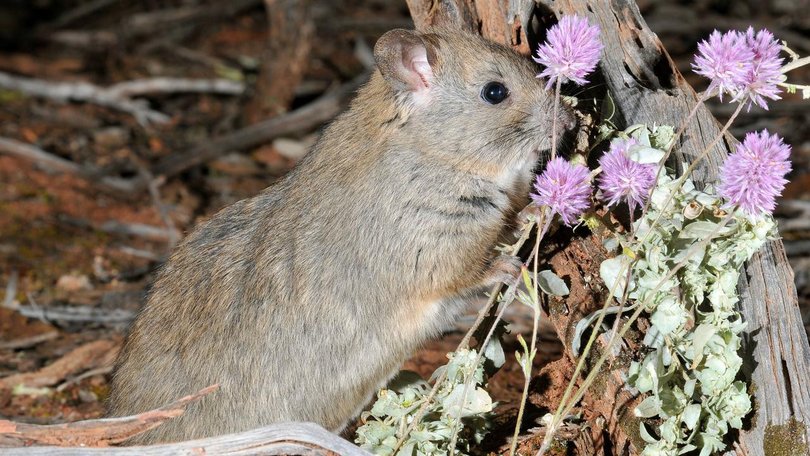Invasive weed found to be rare greater stick-nest rat’s top menu choice on Reevesby Island

The infestation of a small uninhabited island by one of Australia’s most invasive weeds is being begrudgingly credited with aiding the recovery of a once-thought-extinct native mammal.
Originally widespread on the mainland but now fighting to survive offshore, the greater stick-nest rat has taken to feeding on and sheltering in noxious African boxthorn, according to researchers working on Reevesby Island in South Australia’s Spencer Gulf.
The curious preference was revealed in the threatened rodent’s droppings, according to project lead and Flinders University PhD candidate Annie Kraehe.
Sign up to The Nightly's newsletters.
Get the first look at the digital newspaper, curated daily stories and breaking headlines delivered to your inbox.
By continuing you agree to our Terms and Privacy Policy.“I spent weeks poking through the faecal pellets of stick-nest rats to identify microscopic plant remains and this gave us proof of what they have been eating,” she said.
“We then compared the proportion of plants eaten with the availability of potential food plants in the area.”
Boxthorn, a shrub in the nightshade family indigenous to South Africa, makes up half the rat’s diet despite representing little more than one-tenth of available vegetation.
“We also observed that stick-nest rats are more present in areas with higher boxthorn abundance, using it for nesting and shelter,” Ms Kraehe said.
Boxthorn is “incredibly damaging to Australia’s biodiversity”, according to research co-author Associate Professor Vera Weisbecker.
“So our find is a bit of good news about a threatened mammal thriving in a habitat considered degraded by a weed of national significance.”
Greater stick-nest rats were declared extinct in 1930 but their decline began earlier with the introduction of cats and foxes.
Also known as the house-building rat, the guinea pig-sized native rodent builds a large communal home of sticks and stones.
Today, the only existing wild populations are confined offshore and beyond the reach of invasive predators but birds of prey can still pose a big risk.
“African boxthorn offers excellent cover from these raptors, so we think this makes boxthorn thickets a preferred nesting location,” Prof Weisbecker said.
A similar effect has been observed for little penguin populations in the Spencer Gulf but there are few cases of individual native animals benefiting from invasive weeds around the globe.
Fellow co-author Prof Bob Hill says the findings highlight the importance of assessing how well Australia’s unique fauna has adjusted to change.
“Of all the weeds in Australia, African boxthorn stands out as one of the worst offenders,” he said.
“It produces orange/red berries that birds and small mammals feed on.
“The seeds survive the digestive process and get deposited in new places through the animal’s poo.”
Mature plants can grow five metres tall, forming impenetrable thickets armoured with large, formidable thorns, according to the University of Adelaide’s Dr Kathryn Hill.
“These characteristics make African boxthorn one of Australia’s most hated weeds, disrupting wildlife and livestock movement and often blocking access to water sources.
“However, the same traits probably make it appealing to the greater stick-nest rat.”
Overall, the researchers warn against perceptions that invasive weeds are not as bad as they seem.
“We merely show that African boxthorn is being used by stick-nest rats,” Ms Kraehe said.
